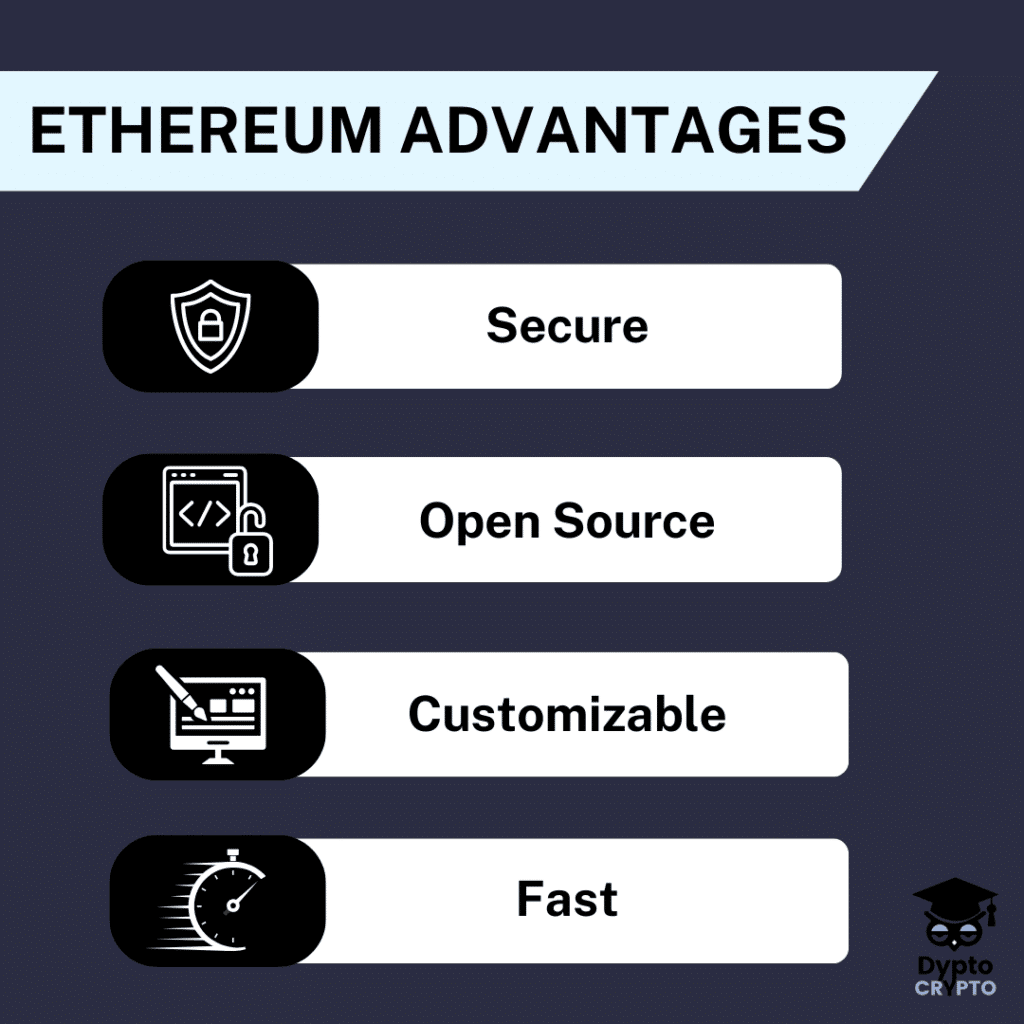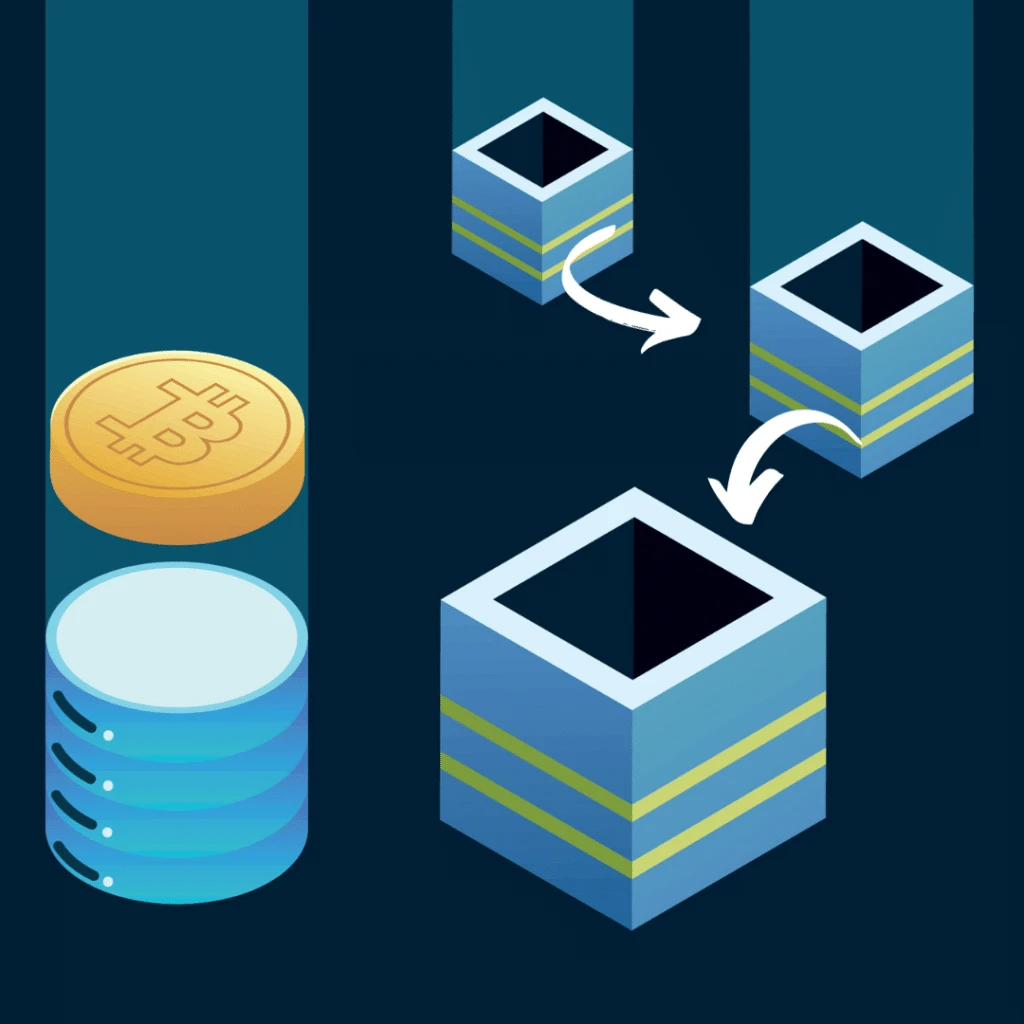
What is Ethereum?
Ethereum is one of the largest and most popular public blockchains. Its native currency is the cryptocurrency Ether (ETH). Users of the protocol can do things like transfer and exchange ETH, complete digital contracts, build applications, and even compete in virtual games.
The long answer
Ethereum is a blockchain protocol. A cryptocurrency blockchain is a safe and secure way to keep records of cryptocurrency-related transactions that enables users to do deals without needing a middleman like a bank.
It is designed to be distributed (a giant network of computers all over the world that all have a copy of the blockchain) and decentralized (every member of the network has a part in controlling the blockchain instead of being controlled by a large company.)
The Ethereum protocol contains all data about transactions that take place on the Ethereum blockchain. It uses a technology called smart contracts that allows developers to build decentralized applications (dApps).

History of Ethereum
Ethereum was created by Vitalik Buterin in 2013. It was initially proposed as a blockchain-based system for decentralized applications (dApps).
After two years of development, the blockchain was finally released in 2015. It has since gone on to become the most popular blockchain network thanks to its use of smart contracts.
The protocol is open source, which means anyone can help develop and improve it.
How does Ethereum Work?
Everything you do on Ethereum is going to be some kind of transaction. Because the blockchain is decentralized, these transactions have to be verified, and the people who do the verifying deserve to be compensated for their work. So, the people who perform the transactions pay a small gas fee to have their transactions verified. These gas fees are paid in the blockchain’s currency, Ether (ETH).
Being the main currency of Ethereum, Ether (ETH) is what is known as a crypto coin. Coins are typically integrated into the working of the protocol itself. Ether, in this case, was created and launched with Ethereum.
But Ether isn’t the only crypto asset on Ethereum– there are others. These are known as crypto tokens, assets that are built on an existing blockchain platform. Ethereum has hundreds, if not thousands, of these.

Decentralized Applications
One of Ethereum’s biggest features is that it enables the creation of smart contracts, which, in turn, allow for the development of decentralized applications (dApps). dApps, as in the name, are apps that run on a decentralized network. They are deployed on the Ethereum network and use the platform’s blockchain for data storage and security.
dApps are used for a variety of things on Ethereum. These include creating and managing digital assets and services on the Ethereum blockchain.
Smart Contracts
We wouldn’t have dApps without smart contracts. These are digital contracts written as lines of code. They are stored on the Ethereum blockchain and used to automate the processing of transactions such as the exchange of money, property, shares, or anything of value.
Smart contracts are secure and reliable since they are stored on the blockchain and are powered by the Ethereum consensus protocol. They are also highly customizable. This means developers can create unique applications and services on top of the Ethereum blockchain.
Nodes
The Ethereum blockchain is composed of nodes. These are computers that run the Ethereum software and store blockchain data. Each node stores the entire blockchain and, if it is also a validator, is responsible for verifying transactions and creating new blocks. To become a validator, you have to stake Ether in good faith.
When a transaction is made, it is recorded on a block. Each block contains a certain number of transactions. When the block is full, a validator will be selected to authenticate the block. Once the block is verified, it is then added to the blockchain.

Proof of Stake
The Ethereum blockchain is powered by a consensus protocol. Since there is no central authority, individuals have to verify all the transactions to make sure they’re legitimate. How this is handled is called a consensus mechanism or protocol.
The consensus protocol was originally proof of work, but since September 2022, it has been proof of stake. Proof of stake means that users can earn Ether by staking a certain amount of their coins in order to earn the right to validate transactions. If a validator doesn’t do their job right, they will have some or all of their stake slashed. So, instead of making money, they will lose money.
The consensus mechanism ensures that all nodes on the network agree on the state of the ledger and the validity of transactions. It also ensures that each node has the same version of the blockchain and that all transactions are verified in a secure and decentralized way.
The Ethereum Ecosystem
The Ethereum ecosystem consists of different elements that come together to make it all work smoothly. It includes all the elements we’ve mentioned before, plus other overlapping systems.
These systems include:
- Ethereum Virtual Machine (EVM), which is a decentralized computer that executes smart contracts and dApps.
- Ethereum Wallet, which is a secure way to store and manage ether.
- Ethereum Name Service (ENS), which is used to register and manage names on the Ethereum blockchain.

The Ethereum ecosystem also includes different tools and services:
These include:
- Blockchain Explorers: Tools or websites that are used to explore the blockchain and view transactions.
- and the Ethereum Network Status Monitor, which is used to monitor the health of the Ethereum network. If there were a security issue or a communication problem between nodes, the network would not be very healthy.
All of this is to enable interactions between interconnected suppliers, customers, trading partners, applications, and third-party data service providers.
Advantages
Ethereum is a revolutionary technology that has numerous advantages:
- It is secure and reliable due to its use of distributed ledger technology and consensus protocol.
- It is open source, meaning anyone can access and participate in its development.
- It is highly customizable, meaning developers can create unique applications and services on top of the existing blockchain.
- It is faster and more efficient than traditional payment systems because transactions are verified faster and more securely.
- It is more secure than traditional payment systems because it does not store any sensitive data on the blockchain.

Disadvantages
- It is still relatively new and may have some technical issues.
- It is not as widely accepted as traditional payment systems, yet.
- It is still an experimental technology, so it is important to be cautious when using it.
- It is not scalable, meaning it may struggle to process a high load of transactions at any given time. This greatly increases the cost of transactions during peak periods.
